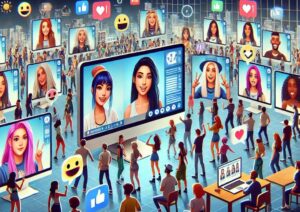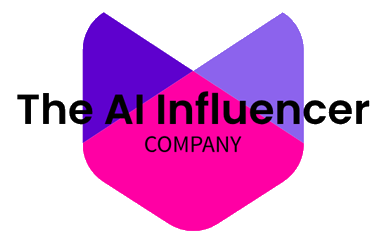In recent times, a new kind of influencer has emerged on social media – the virtual influencer. These computer-generated influencers are fictional characters that are created using advanced technology and artificial intelligence.
They have their distinctive persona, profile and content just like real human influencers. But they are not real people made of flesh and blood.
Read the entire article to know what virtual influencers are and what they do. Let’s define first what these digital personas are.
What are Virtual Influencers?
To break it down, virtual influencers are carefully crafted personas, not actual humans. Using advanced 3D modeling and animation tools, companies design lush visuals – from eye color to hairstyles and makeup looks.
They have defined personalities, background stories, visual appearance and content just like human social media influencers or celebrities.
Popular Virtual Influencers Today
Here are some of the most popular virtual influencers on social media today with large followings:
- Lil Miquela – teenage “robot” with girl, 3 million Instagram followers
- Knox Frost – menswear “model”, 1.25 million Instagram followers
- Shudu Gram – “World’s First Digital Supermodel”
- Imma Gram – Japanese virtual model and singer
- Bermuda – Pop star from virtual band Anthropic
- Blawko – Fashion model, 1.7 million Instagram followers
- Lil Wavi – Rapper and hip-hop virtual artist
- FN Meka – Virtual hip-hop artist signed by Capitol Records
- Rozy– the first Korean virtual influencer
- Zoe Dvir – The digital model originally from Tel Aviv.
What Do Virtual Influencers Do?
Virtual influencers can perform many of the same social media activities and roles as human influencers:
- Create social media content – They regularly post photos and videos showcasing fashion, beauty products, travel and lifestyle on platforms like Instagram and TikTok. This content features their CGI visuals and often promotes sponsored brands and products. Some also go live using AR technology.
- Model products – Virtual influencers model clothes, accessories, jewelry, cosmetics and more from major brands who send them products or create digital assets. Their associated companies also create and sell virtual merchandise like skins or accessories.
- Promote brands – They promote companies and products by featuring sponsored posts, product placements and brand collaborations woven into their feeds and stories. Some are directly created by the brands themselves.
- Interact with followers – They respond to followers, host AMA sessions, and comment on other profiles to foster parasocial connections that drive loyalty.
- Attend events – Virtual influencers make appearances at real world events like fashion shows and parties. This could involve fanciful AR technology.
- Give interviews – As their fame grows, virtual influencers get interviewed in magazines, talk shows and podcasts just like human celebrities.
- Collaborate with other influencers – They partner with human influencers and crossover into each others’ content for maximized reach.
- Sell merchandise – Their branding extends into merchandising clothing, accessories, toys, electronics and more featuring their likeness.
- Get brand deals – Virtual influencers land sponsorship deals, brand ambassador roles and ad campaigns with major labels across fashion, beauty, entertainment and other verticals.
- Go on tour – Some virtual music artists are going on concert tours using hologram technology to “perform” for crowds on stage.
- Release music – Virtual artists have released pop albums, hip-hop tracks and more. FN Meka for instance landed a major record label deal.
- Get verified – Platforms like Instagram and TikTok have even given select viral virtual profiles the coveted blue verification checkmark.
Their activities are enabled by real people – creators, managers, engineers etc, who operate the accounts, develop content strategies, and negotiate business deals.
In these ways, virtual influencers are adopting similar roles to human influencers but without being human themselves. Their capabilities will only grow over time with improving technology.
Types of Virtual Influencers
There are a few broad categories of virtual influencers emerging:
CGI Models
- Lifelike CGI models like Lil Miquela, Shudu Gram etc.
- Resemble photorealistic humans with detailed modeling
- Model high fashion looks and luxury brands
- Aim for mass appeal among younger demographics
Animated Characters
- More stylized and animated looking
- Appear like 2D or 3D cartoons/avatars
- Used for lifestyle, gaming and entertainment niches
- Allow more creative flexibility vs CGI realism
AI News Anchors
- AI synthesized models who present news
- Developed by media companies to automate reporting
- Deliver news 24/7 without human presenters
- Raise concerns about truthfulness and ethics
Influencer Personas
- Regular influencer accounts run by AI
- Have AI chatbots that interact with followers
- Post quotes, advice and opinions like humans
- Used more for micro influencer marketing
Virtual Celebrities
- Larger than life personas with CGI, AR, VR
- Full worldbuilding around their characters
- Go on tours, hold concerts, sell merch
- Blends influencer marketing and entertainment
As virtual influencer technology matures, we can expect more specialized types and roles to emerge in the future. But CGI fashion models and micro-influencer accounts dominate currently.
How Do Virtual Influencers Work
Virtual influencers appear to function just like human influencers on the surface. But a lot of advanced technology powers them behind the scenes:
CGI and Visual Effects
- Their digital visuals are created using 3D modeling software like Maya or Blender.
- Photorealistic CGI can precisely recreate human anatomy and textures.
- Real-world photos and scanned actor faces provide visual references.
- Visual effects like shadows, reflections and lightning add realism.
- Outfits are digitally tailored and products are digitally placed into scenes.
Artificial Intelligence
- Natural language processing – enables virtual influencers to understand and respond to comments and messages from followers.
- Neural networks – develop the influencer’s personality based on absorbing vast data.
- Computer vision – allows the AI to see and understand visual content and context.
Big Data and Analytics
- Data analysis informs content strategies and brand partnerships.
- Metrics like follower demographics and engagement are closely tracked.
- Hot trends and winning content formats are identified from the data.
Human Support Teams
- Human managers run the account and oversee content production.
- Writers craft captions, interview responses and other text.
- Designers create concepts for photoshoots and branding.
- Engineers develop and refine the underlying AI systems.
- Lawyers handle contracts and commercial agreements with brands.
The result is an influencer profile that convincingly pulls off being human but is powered by emerging technologies behind the scenes. These AI systems will only evolve to become more advanced and hyper-realistic over time.
Purpose of Virtual Influencers
There are a few key goals and purposes driving the creation of virtual influencers:
- Marketing – The primary purpose is to create a marketing vehicle that can promote products to target demographics. Brands can perfectly craft the influencer to appeal to their buyers.
- Brand Control – Virtual influencers allow brands to have total control over the influencer’s image, messaging and partnerships. There is no risk of scandals.
- Novelty – Pioneering novel AI technology helps tech startups gain attention and interest from investors and media.
- Scalability – Having a virtual influencer allows scaling campaigns and partnerships far beyond human constraints.
- Trendiness – For younger generations like Gen Z, virtual influencers represent the future and tap into tech-savvy trends.
- Entertainment – Some are pursuing virtual influencers just for the creative challenge and entertainment value like an experiment.
- Innovation – Pushing innovation in areas like AI, CGI, VR and blockchain is a motivation for some developers.
- Lower Costs – Once created, a virtual influencer has lower upkeep costs than human influencers in the long run.
The mix of business and technology goals has driven rapid innovation in virtual influencers in recent years. And the purposes driving adoption will likely continue to evolve over time as well.
Conclusion
For now, virtual influencers appear poised for continued growth and expansion. As the technology improves, they may become commonplace ambassadors for brands seeking more control and consistency. However, virtual influencers also face skepticism and distrust from consumers wise to deception.
Walking the line between convenient fiction and manipulative fabrication will be critical. The brands best able to instill authenticity, value and transparency through their virtual influencers are likely to see success. But those who cross ethical lines risk backlash.
The coming years will reveal more about the creative potential and unintended consequences of blending social media marketing with emerging technology. Virtual influencers undoubtedly represent the vanguard of this uncharted future. Their lasting impact has yet to be written. But one thing remains clear – the virtual revolution has only just begun.
Talk to us at AI Influencer Company if you want more details.




